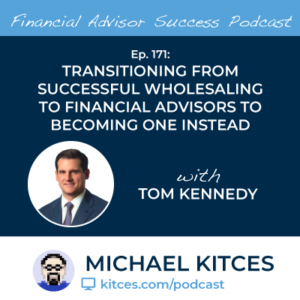While the current Coronavirus pandemic has resulted in strict social distancing measures around the world, financial advisors who are restricted to working from their home offices are finding ways to stay in touch with their clients to continue providing the same level of service, even without the capacity to hold in-person meetings. One way advisors have continued to meet with clients is through videoconferencing – using computer technology and conducting virtual, face-to-face meetings over the internet – with readily available equipment already installed in most modern computer systems, or in some cases purchasing new equipment to create or improve their home office videoconferencing setup. With the caveat that many advisors aren’t necessarily familiar with what the “best” videoconferencing equipment is for conducting professional-looking virtual client meetings!
In this guest post, Bill Winterberg – financial technology consultant and founder of the tech blog FPPad.com – provides a practical overview of some of the technology choices financial advisors need to consider to up their videoconferencing game, from the best cameras and microphones to use, to the ideal lighting and “green screen” background options to ensure that advisors maintain a professional appearance for their clients.
Notably, while most laptop computers have built-in webcams that will prove sufficient for videoconferencing needs, financial advisors can upgrade their equipment by investing in an external USB webcam, such as the Logitech C920 or C922, which allow for more flexible positioning on top of their computer displays or mounted on an external tripod for even more flexibility. Microphones are also often built into laptops and computer monitors, but aren’t often situated for optimal sound quality. As an alternative, headsets (e.g., the inexpensive Logitech H390, or the more sophisticated HyperX Cloud II, or Plantronics Voyager Focus UC) can be used for enhanced audio quality, and available options include both wired USB and Bluetooth-enabled systems. For a less conspicuous headset option, the Bluetooth Plantronics Voyager 5200 headset offers a wireless, compact design and fits around one ear with a small microphone arm for voice detection. Lighting equipment, such as the Fotodiox Pro Flapjack or the Elgato Key lights, can also be used to provide consistent image quality, which can be especially important in low-light settings (or where available light sources may be inconsistent and unpredictable).
Finally, advisors can follow a few simple guidelines to make themselves look their best on-camera and to create a camera-ready workspace. By looking at the camera (instead of the image of the client’s face on the computer screen) and standing instead of sitting during the videoconference meeting, advisors will look more engaged and energetic during the meeting. Also, keeping the area captured by the camera clear of clutter and other distractions will provide for a more professional appearance, making it easier for videoconference participants to focus on the meeting itself. If the nature of the physical space doesn’t allow for convenient modifications (e.g., if the area is in a tight space at home or perhaps in a high-traffic area shared with family members), a room divider or green screen (like the Fotodiox Collapsible Portable Backdrop or the Elgato Collapsible Green Screen) can be helpful to reduce distracting backgrounds. And ideally, be certain the advisor can orient themselves so their back isn’t to an open window (which can result in too much background light that distorts the video image and/or leaves the advisor’s face in shadow).
Ultimately, the main point is that financial advisors can continue to meet with their clients remotely during these turbulent times especially when their clients need their support the most. By setting up some simple, affordable, and easy-to-acquire equipment, advisors can use videoconferencing to maintain their connection with clients in a personal manner, all while working from home.

 Welcome back to the 172nd episode of Financial Advisor Success Podcast!
Welcome back to the 172nd episode of Financial Advisor Success Podcast! Welcome back to the 171st episode of Financial Advisor Success Podcast!
Welcome back to the 171st episode of Financial Advisor Success Podcast!
